Watches and cars have often intertwined like Lauda and Hunt, McCrae and Mäkinen, or Jaguar and the looming threat of impending financial doom. But wait. Shelby American, the fast Mustang tuners, and Bulova, the New York-based watchmakers, making off together like a blue-collar Breitling-Bentley duo? To learn of this new union and indulge in a world that always ran adjacent to cars, I had to see for myself, and there was the perfect opportunity in my own backyard, hosted under the same roof as some of the most coveted American sports cars of all time.
First, let me preface this by admitting that I’m a total noob at watches. My collection is modest and half-comprised of gifted watches. My knowledge is an inch or two below surface level at best, and I’ll likely never be a connoisseur. But I do have an appreciation and curiosity for the craft, which was enough to goad me to attend after receiving the invite.
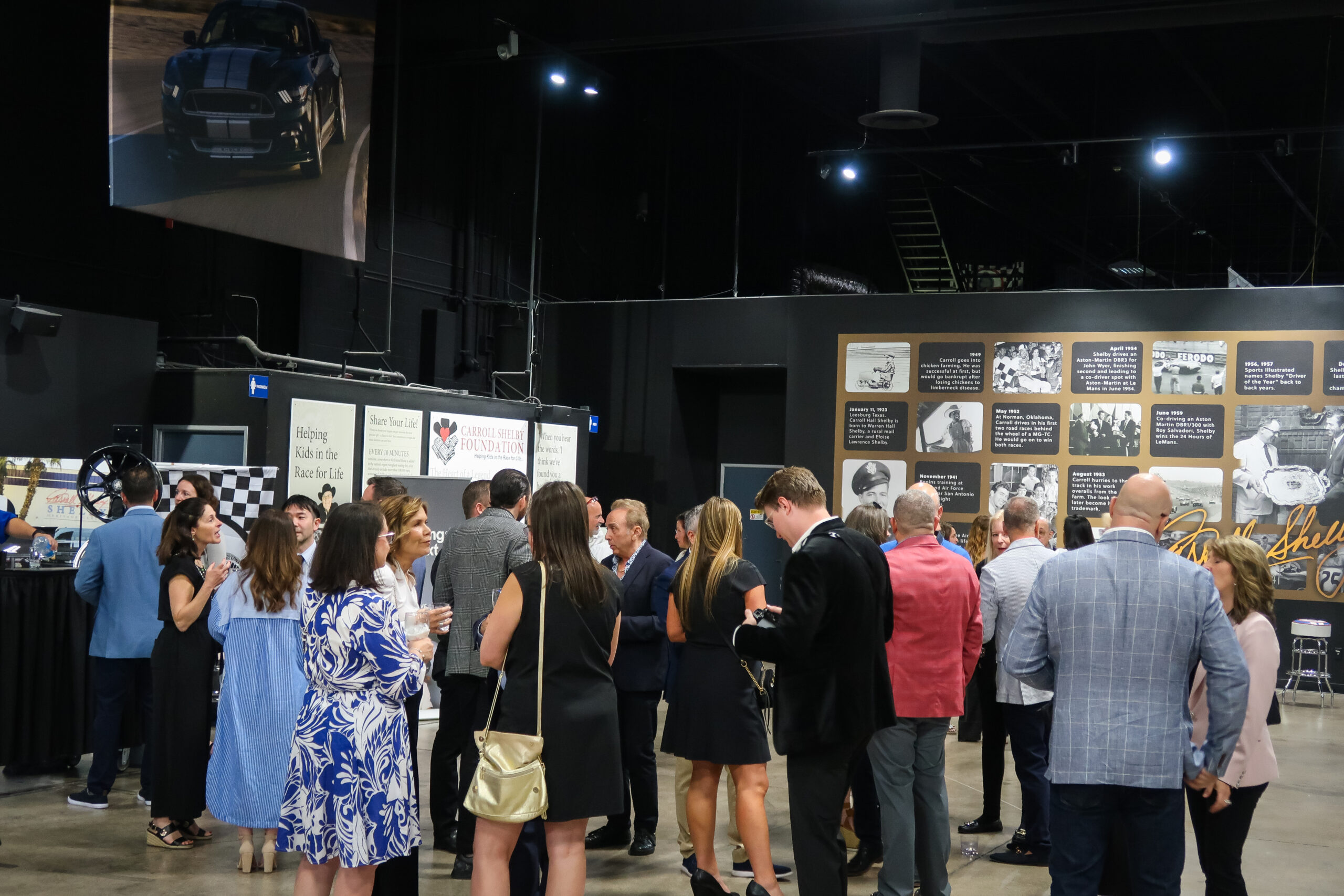
And so, there I was at the Shelby American museum in Las Vegas on a Wednesday night, fresh off the clock from my day job, horrifically underdressed in a tie-dyed shirt, a loose button-up, and a beanie. It felt as though I stood out like a mangled thumb amongst a crowd of fashion brand reps dressed to the nines. My only visual connection to them was the Seiko on my wrist. But that didn’t matter.
What mattered was that we were there together, enjoying fine dining, free drinks, and classic Shelby eye candy for the unveiling of a new Bulova watch that will further cement this continuous synergy between the worlds of timekeeping and automotive. It was a small gathering at a badass venue for what commemorates an equally revered marque in motorsports history, as well as Bulova’s 150th anniversary. The museum itself was open to explore, from its department-store-sized merch shop to the actual Shelby factory.
Anything Shelby, from the new cars being assembled to the Ford V. Ferrari movie cars, and even the new S650 Mustang-based Super Snakes and GT350s, were present, although the Radwood-era Shelby Dodges that are usually here were absent. Sorry, Chrysler fans.
As for timepieces, Bulova took center stage as the night’s main focus. Originating in Queens, New York, in 1875, the company boasts a motorsports heritage spanning decades, and its comparatively friendly pricing makes it an ideal companion for collaboration with Shelby American, whose upbringing and racing successes have become a widely known underdog story. We all know how much the world loves rooting for those.
And you know what? Quite the collaboration, it is! Or maybe my simple-minded self is biased because I love the color blue. You look at it and decide for yourself.
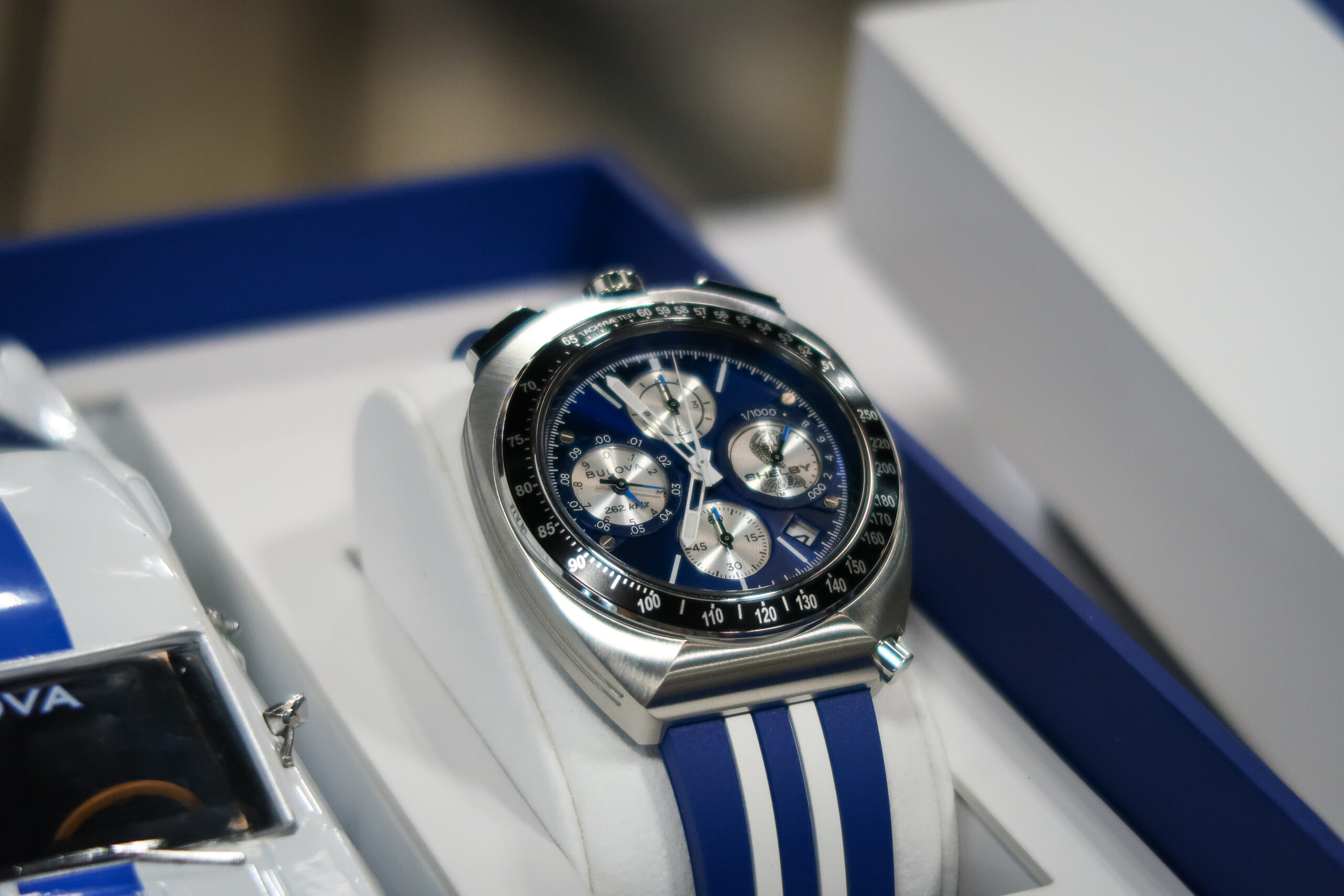
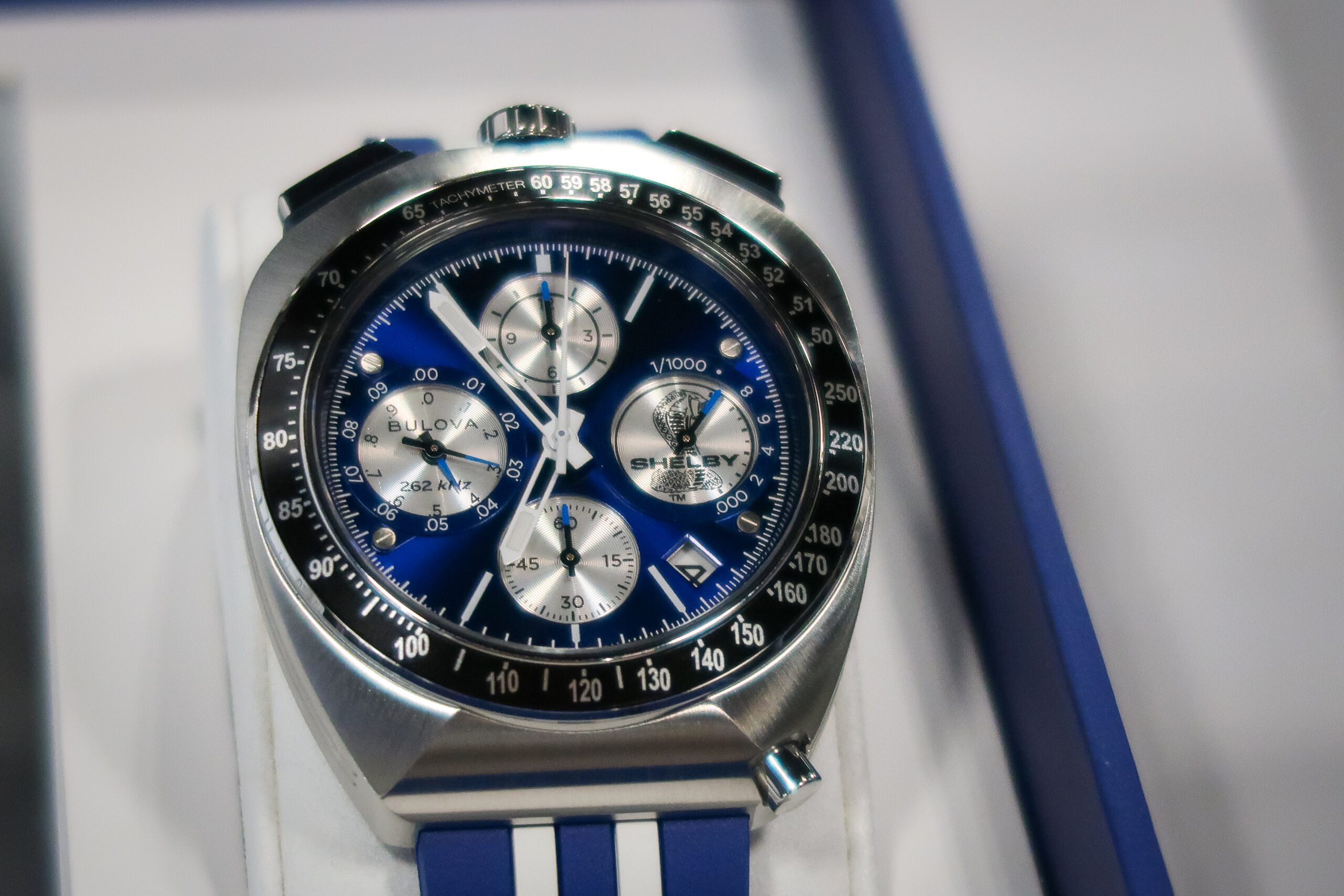
Bulova, along with a few head honchos of Shelby American, cracked open the box on its new Shelby Limited Edition Racing Watch. It’s a special and comparatively rare piece, with only 7,500 slated for production. The blue dial with white-striped bracelet references Shelby’s most famous cars, like the many Cobras, GT40s, and GT350s that call the museum home, and its bezel is a shrunken-down caricature of stopwatches from long ago. It’s a bespoke design, yet it seems to borrow traits from Bulova’s Racer Chronograph series. The resulting watch is a neo-retro throwback that’s sure to strike up conversations at many car-and-coffees when it hits stores in September.
I’m no fashion critic. I have zero “drip,” as my generation would say, and tastes are always subjective. That said, perhaps the sheer vibrancy of the Shelby watch in a sea of silver bracelets and grayscale dials will be perceived as a little gaudy–or very gaudy–to some. For me, it’s blue, shiny, and colorful to tickle my brain just right. It even comes with an adorable and sharply detailed GT350 die-cast to match.
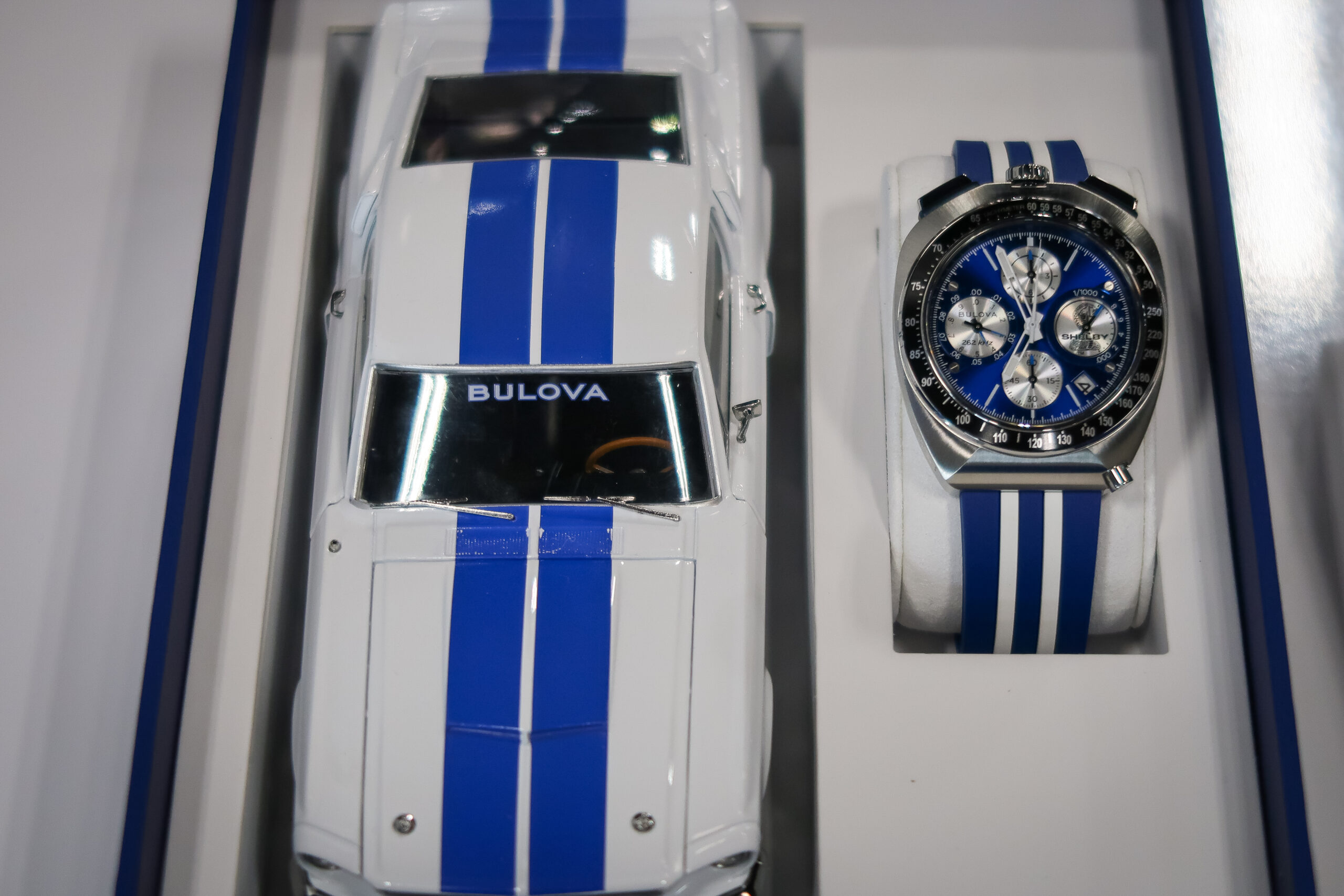
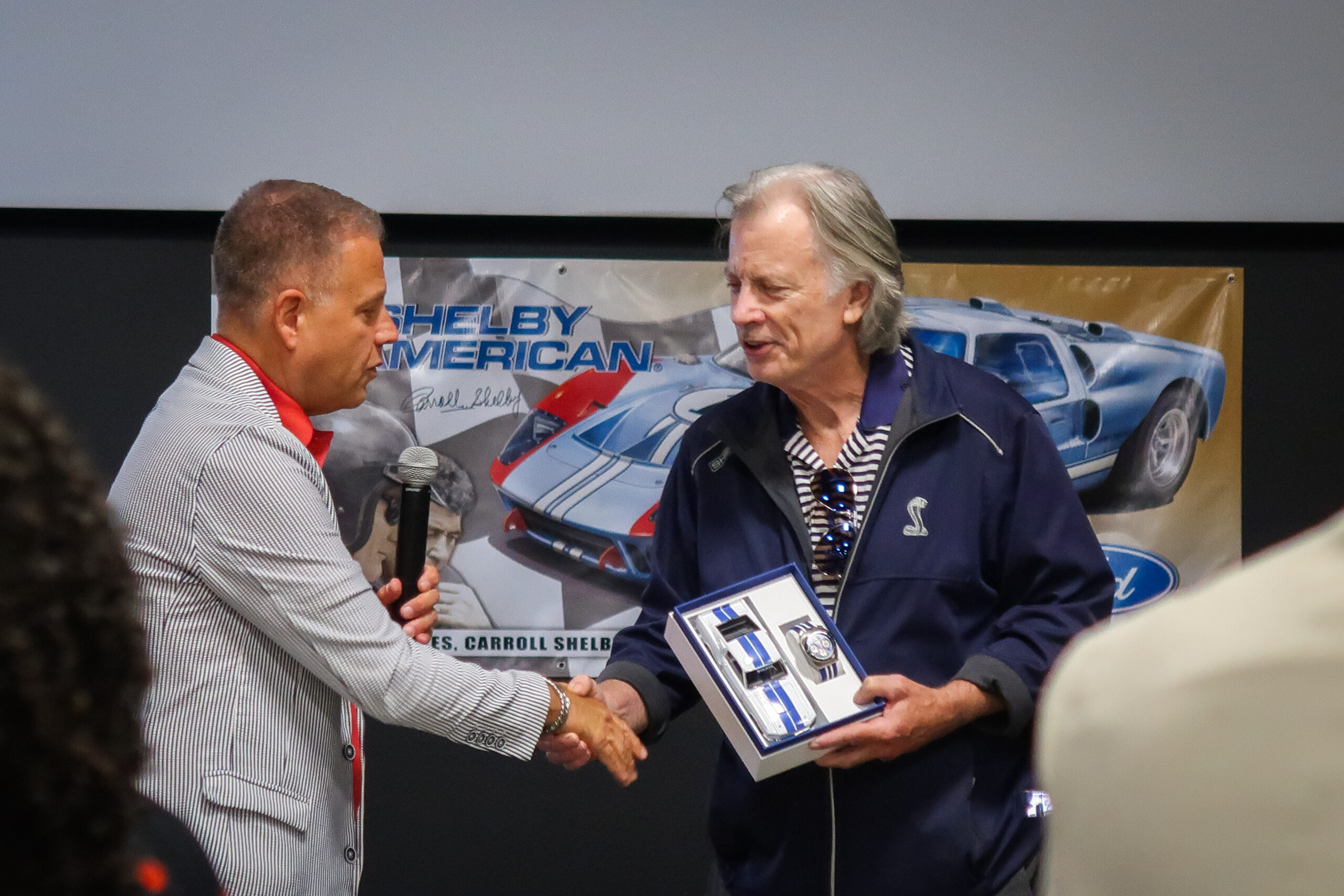
Now, let’s put aside the shiny blue watch and the cars it’s surrounded by. Big-block Cobras are fine and dandy, but just as notable was how Bulova’s new watch proved that the connection between timepieces and cars goes deeper than collaborative products between seemingly unlikely mashups. I mean, it has to, right?
After amassing a small collection and befriending a few fanatics here and there, I thought I had already understood the connection well enough, even as a rookie. But I chatted it up with the person who invited me out, event co-organizer and fellow auto journalist Michael Satterfield of The Gentleman Racer, just to be sure.
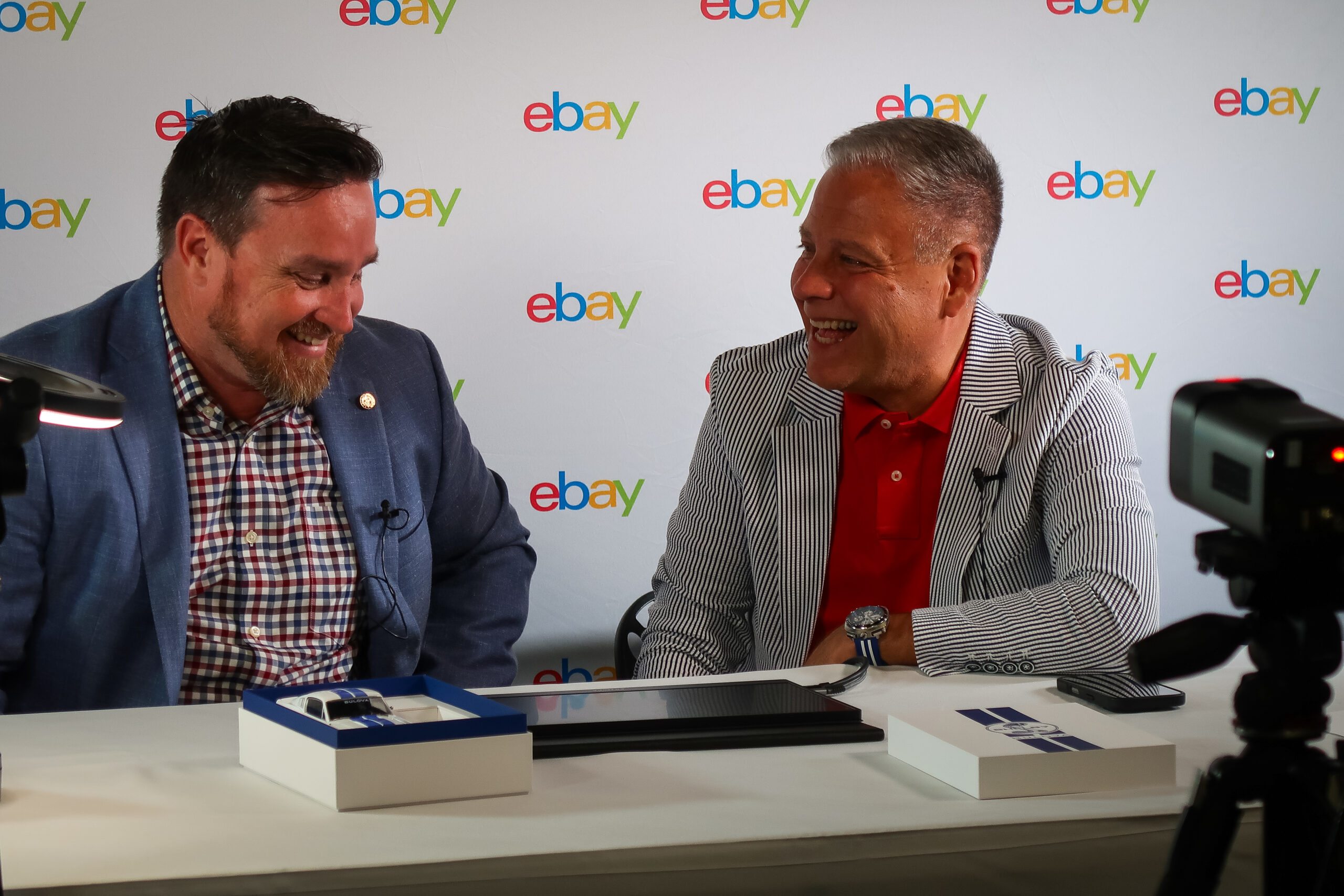
“Well, it’s pretty much all motorsports,” Satterfield explains. “It all goes back to timing, right? From the very beginning, motorsports would use watches and other timepieces for everything. Testing, lapping, and record-setting, it was all done with watches, hence the many collaborations with racing and watch companies. The chronograph on your wrist, for instance, is an example of that.”
In short, a need for record-keeping driven by competition has been the driving force since the beginning. Teams needed robust and accurate timepieces to prove their performance against adversaries down to mere fractions of a second. Satterfield detailed past relationships between renowned watchmakers and world-famous racing leagues, as well as bantered with me about the lengths old racers and some present-day collectors go to for race timing, including strapping stopwatches to the dashboards of their cars.
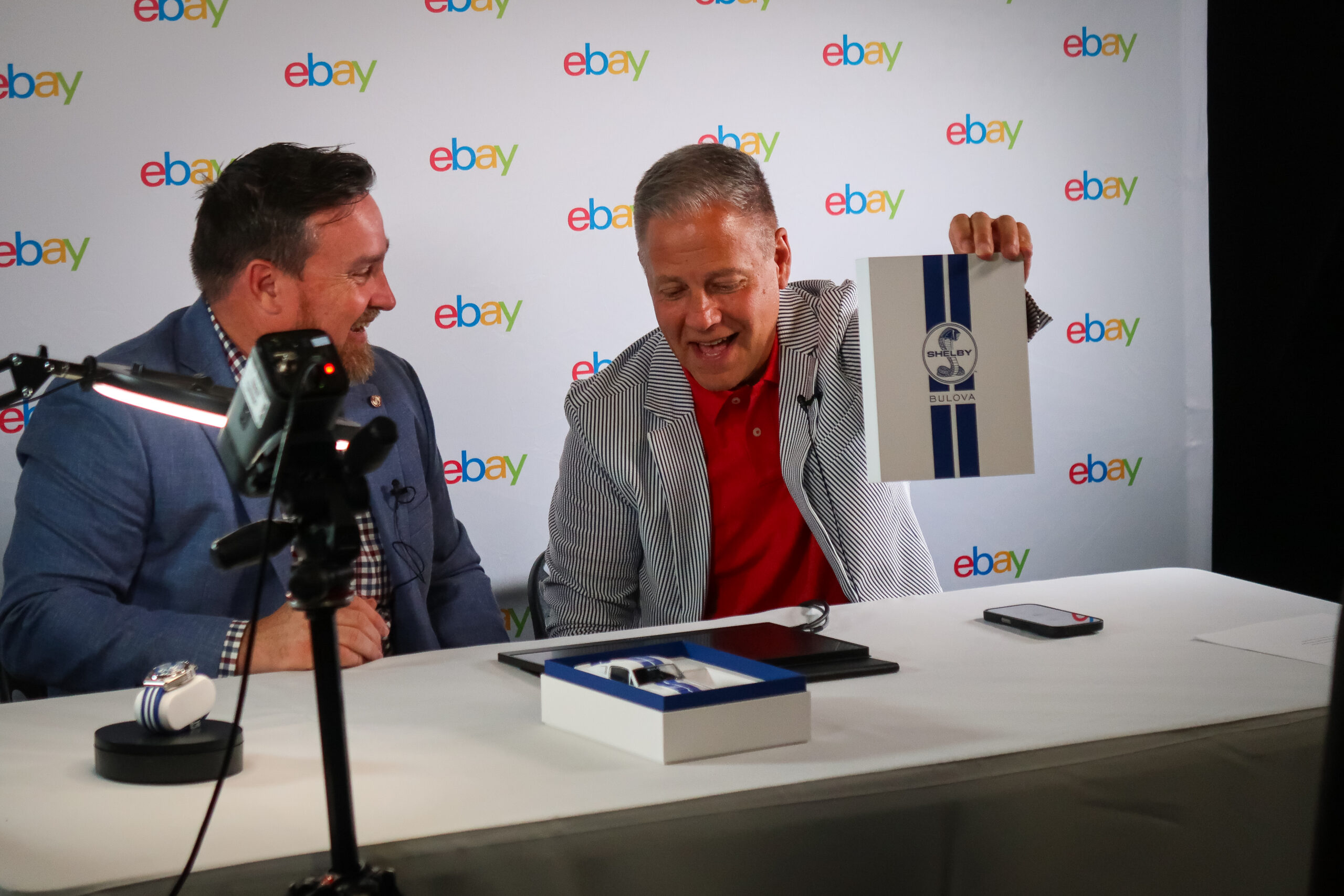
Today, we may find it quirky and humorous-looking. A method of another era with a uniquely steampunk aesthetic. But in hindsight, how is it any different than modern-day race cars or track builds with GPS lap timers? Or what about high-end sports cars with built-in chronographs? Looking at you, especially, Porsche.
It’s not any different. Not at all. That tie is arguably the main reason why chronographs were and still are a thing. As Satterfield pointed out, even the HKS collaboration Seiko chronograph I wore signifies that bond to racing’s past.
Hell, timekeeping even goes as deep as when my friends and I were deadbeat highschoolers using the stopwatch apps on our phones to see how fast our hundred-horsepower shitboxes ran from zero to 60–it was in the ten-second range, by the way, thanks for asking.
“There’s Tag Heuer and Formula 1, for instance. Before, it was Rolex. And then there’s Bulova with Formula 1 and NASCAR, as you’ve seen with the vintage displays,” Satterfield concludes, referencing the memorabilia immortalizing Bulova’s rich history.
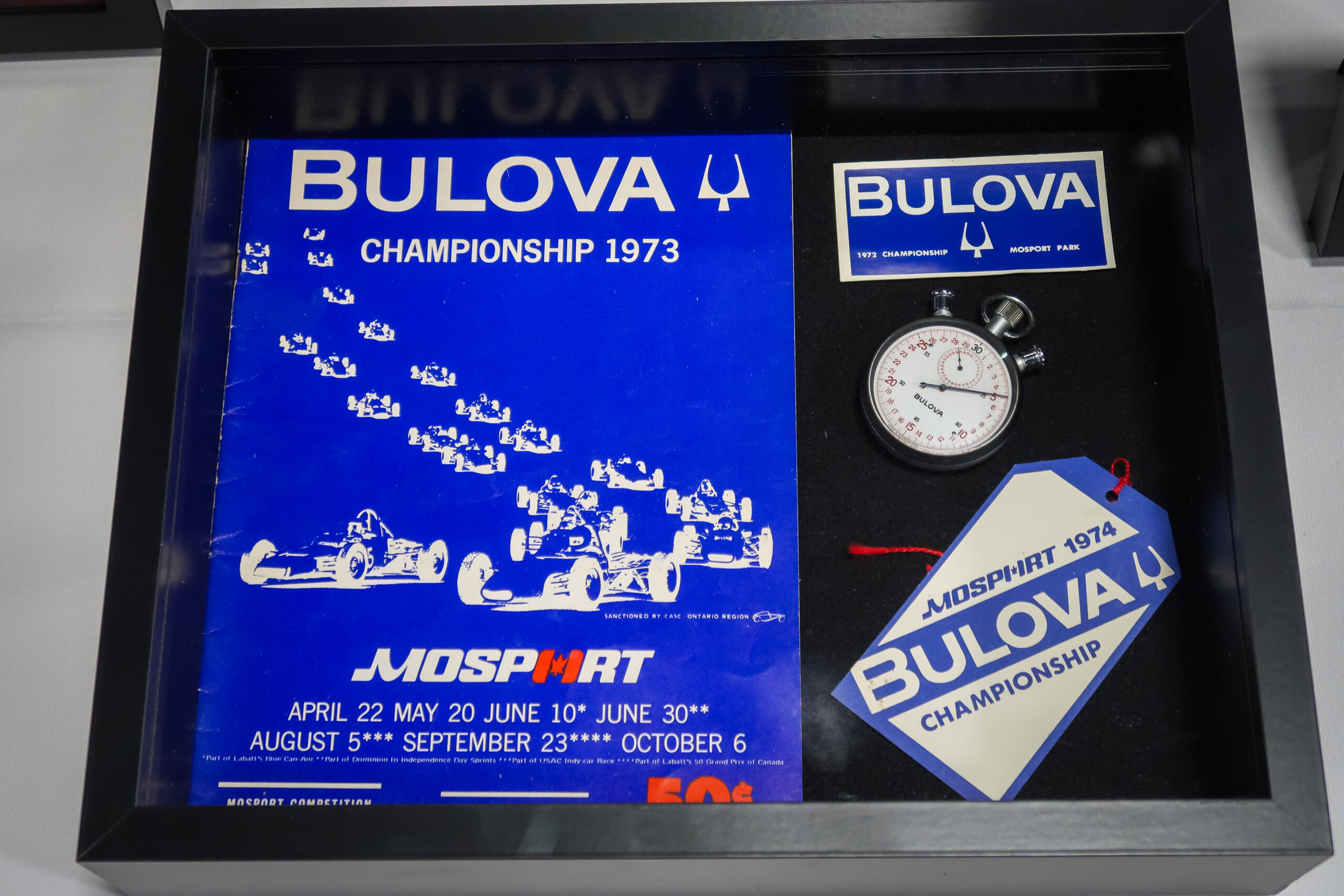
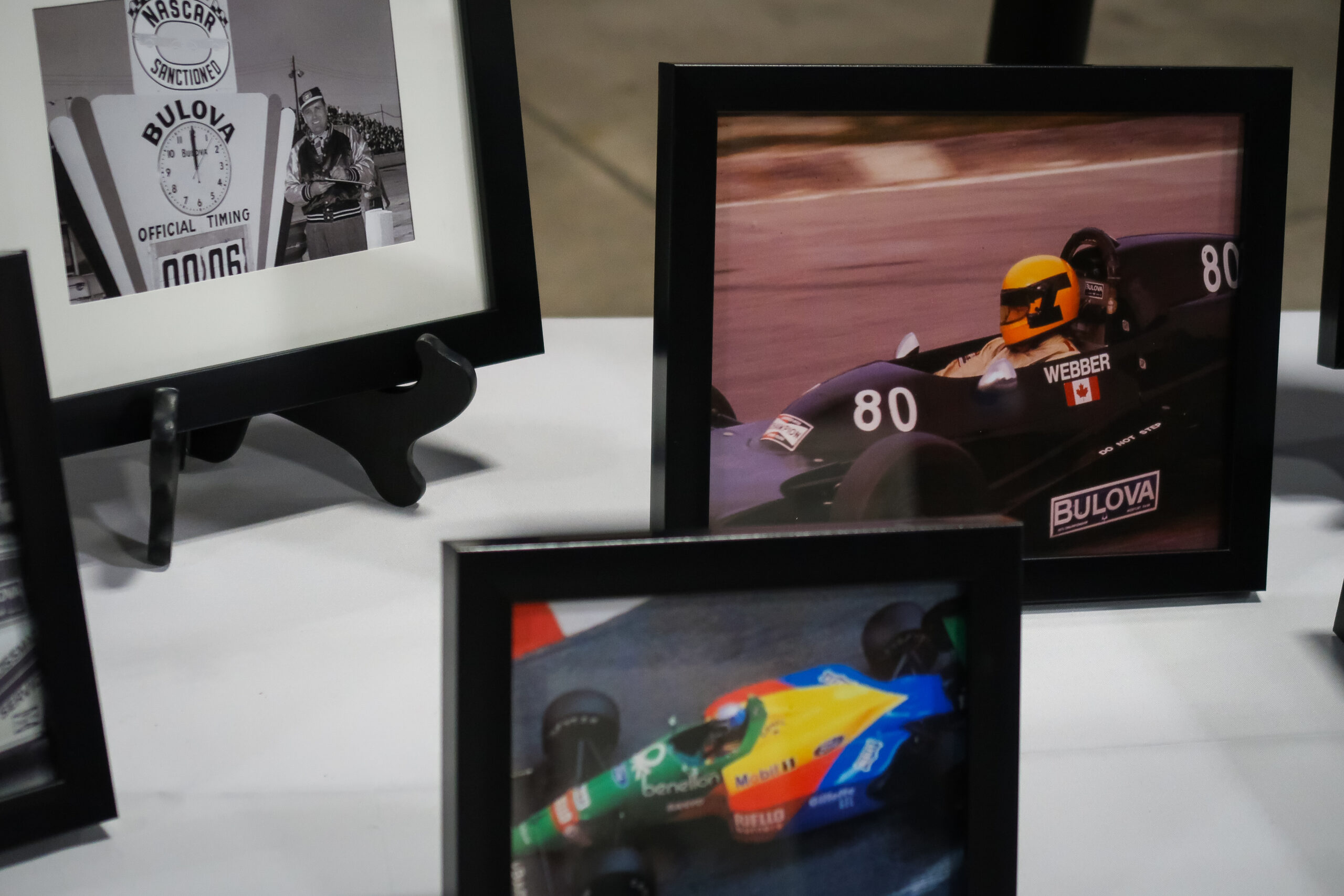
Today, Bulova doesn’t sponsor any big auto racing, although they do sponsor boat racing as of 2024. However, through timepieces like its Racer Chronograph series and the new Shelby watch, the brand still acknowledges and appreciates its vivid past, as though to say those racing days will always be a part of its identity.
I consulted with a good friend, watch fanatic, and automotive videographer, Gavin Pouquette, for his own worldview later that night. He reaffirmed both his and my belief in the two cultures intersecting, not only through battle on the race track, but also through less gladiatorial means —a shared appreciation for their mechanical crafts as a form of art.
“It’s [watches and watch culture] the culmination of art, science, and engineering,” Pouquette explains. “It’s the engagement of a math machine on your wrist that’s also appealing to use, or just to look at.”
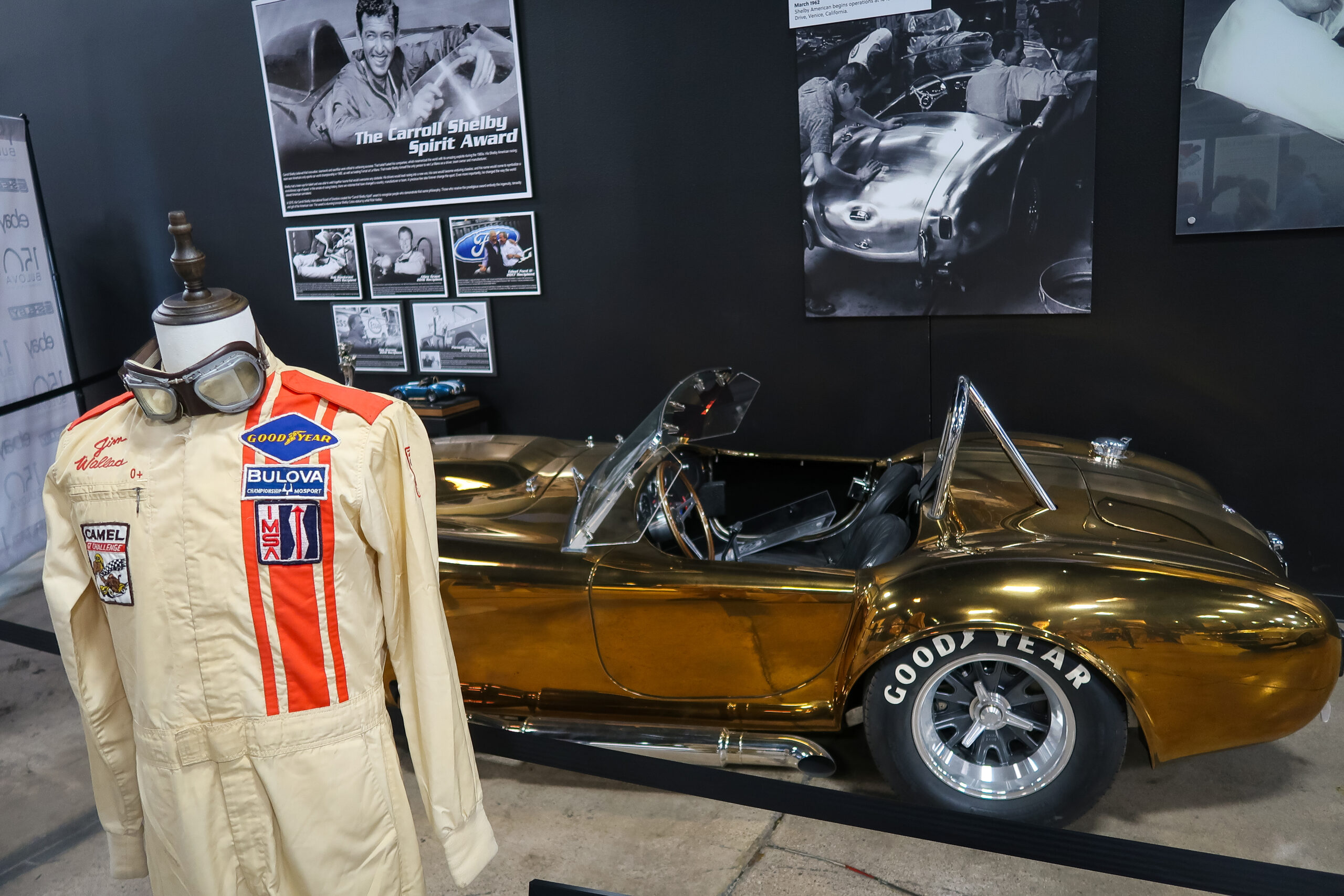
There are those of us who enjoy nice cars or watches simply because they’re pretty. No deeper understanding of all the nitty-gritty technical aspects necessary. And there’s no harm in that. At that point, it becomes an appreciation for the talent of artists, with the artists being the creatives within these companies whose drafts make it from paper to production.
Like oogling over the four-wheeled sculptures signed by Bertone or Pinninfarina, one can also find oneself ensnared by the lines, mechanisms, and luster of the best watchmakers’ work. It’s not even a matter of status or fashion anymore when distilled to that very essence. It’s just something pretty. And to a few, that’s all that counts.
For instance, Paganis aren’t the last word in supercars. They’re not the fastest, most track-capable, most expensive, or most technologically advanced. Yet, that doesn’t stop them from being one of the most hallowed automakers. Sometimes, aura is all it takes, and the right timepiece can carry it in spades.
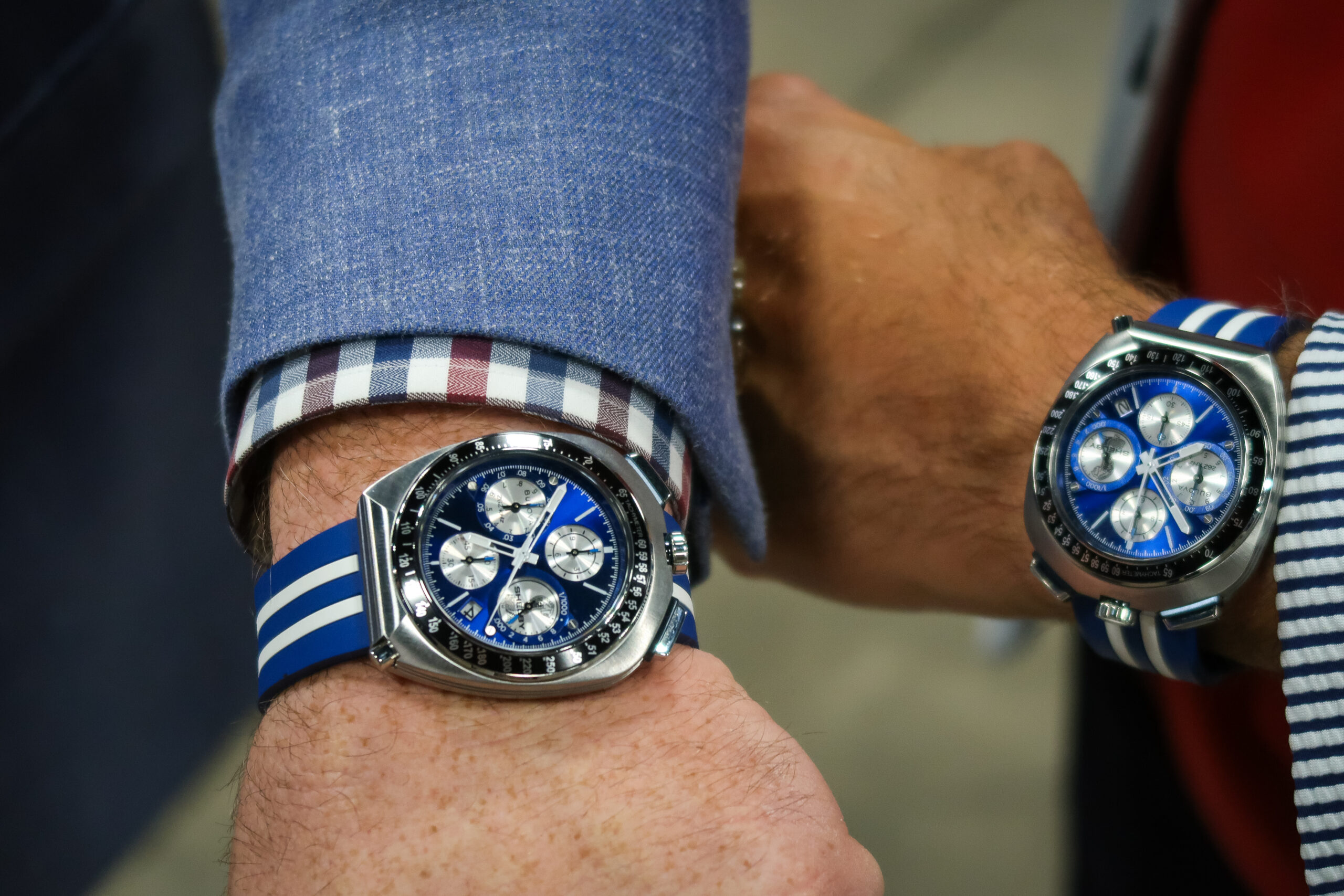
In the end, my curiosities were sated for the night. I walked away affirmed that cars and watches are two sides of the same generations-old coin. They’re both mechanical, engineering, and design marvels, admired on their own, but then became bound by competitive sport since the second car rolled off the line. And beyond both their sporting and everyday practical purposes, they garner widespread adoration for a higher level of craftsmanship and visual appeal, highlighting the dedication that those who produce them have put into them.
Watches and cars have often intertwined. And it seems, for one reason or another, they always will be until the end of time.
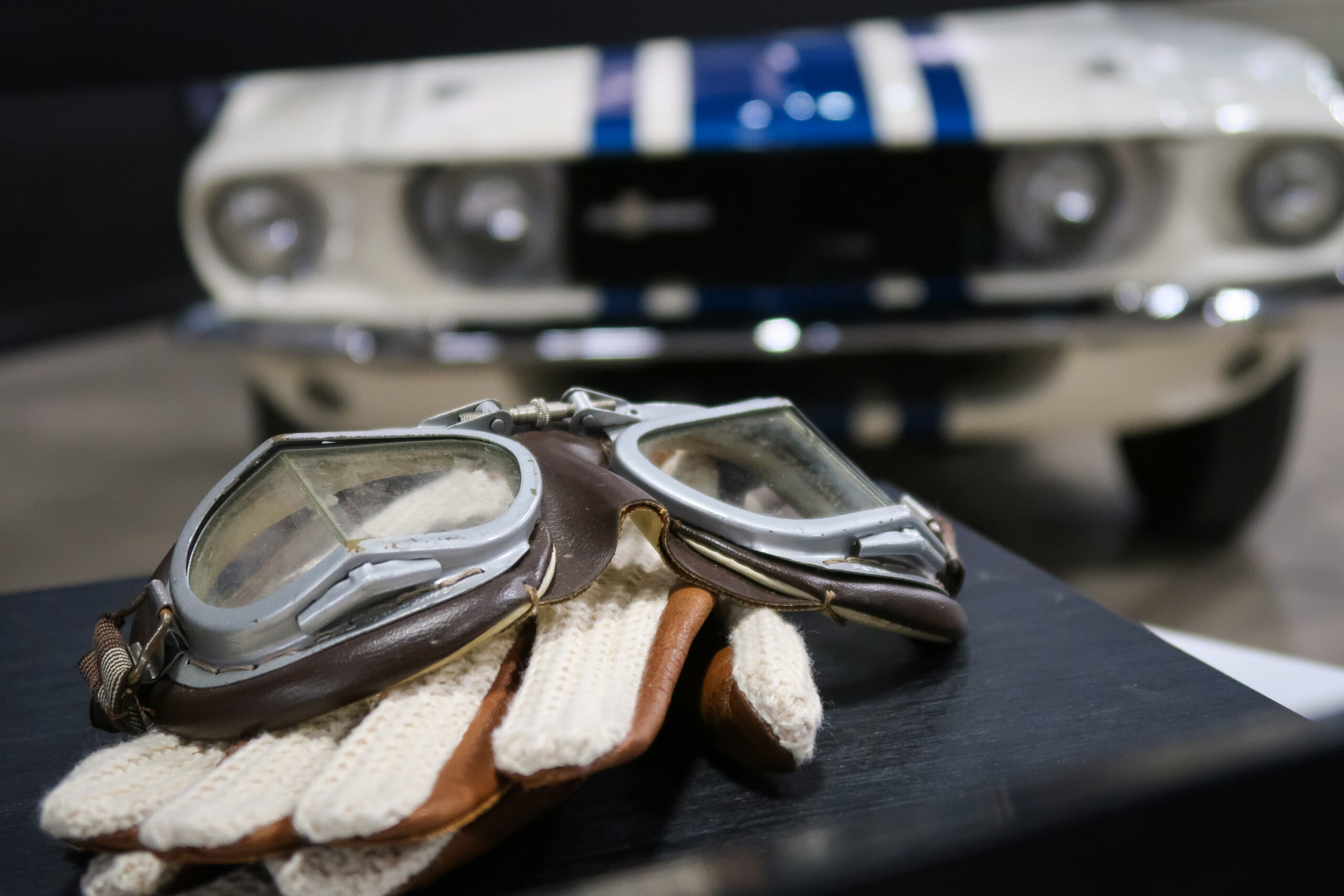
Published in Watches



